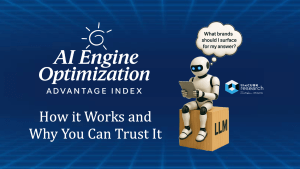The Boomi World 2025 keynote sets the stage for a deeper exploration of the shifting enterprise integration landscape, where API management, data orchestration, automation, and artificial intelligence (AI) are no longer siloed capabilities but interconnected building blocks of modern digital infrastructure. This convergence reflects broader market pressures and evolving enterprise demands. According to theCUBE Research, 73% of organizations cite integration complexity as a barrier to digital transformation, and more than 60% report that siloed automation and inconsistent data governance are impeding their ability to scale AI and analytics across the business.
Enterprise Technology Research (ETR) data further reinforces this trend, showing a steady investment increase across integration and automation platforms. In ETR’s latest survey data, the Integration Platform-as-a-Service (iPaaS) category saw a 20% Net Score—a measure of spending momentum—indicating strong forward-looking adoption. Meanwhile, spending on AI-enabled technologies linked to integration and data platforms is trending upward among Global 2000 enterprises, with nearly 40% indicating plans to increase investment in AI-capable integration tools over the next 12 months. These trends point to growing recognition that digital transformation outcomes depend on deploying and integrating advanced technologies seamlessly into existing operational systems (see figure 1).
Figure 1. Enterprise Priorities and Challenges in Integration and AI for 2025

source: theCUBE Research and ETR
As enterprises increasingly adopt hybrid and multicloud strategies, the need for a unified platform to manage complexity, enforce governance, and enable real-time decision-making becomes critical. This year’s Boomi World keynote underscores the company’s strategy to meet this need, supporting composable enterprise architectures and operationalizing AI across the integration stack. Boomi’s platform-centric approach aligns with what both theCUBE Research and ETR identify as a core priority for CIOs in 2025: reducing friction between systems, teams, and data to drive agility, scalability, and intelligence. In this context, Boomi is positioning itself as an integration provider and a strategic layer in the enterprise technology stack, essential for building intelligent, adaptive, and resilient digital operations.
Artificial Intelligence and the Practical Adoption with Orchestration
AI adoption remains a priority for enterprise IT leaders, yet challenges persist. According to McKinsey’s 2024 Global AI Survey, only 25% of organizations have scaled AI beyond pilot projects. Boomi’s AI-related sessions address this scalability gap by focusing on orchestration and real-world applications.
Key updates include Boomi AI Studio, which introduces agentic AI capabilities that support the orchestration of tasks across systems and even physical robots. Notably, Boomi’s API Documentation Agent leverages generative AI to automate the creation of consistent and structured documentation from OpenAPI specifications. This approach supports human readability and machine-based consumption—an essential capability in environments where AI agents increasingly interact with enterprise APIs. These updates reflect a broader trend toward operationalizing AI to minimize friction for existing development teams and processes.
API Management Establishing Control in Fragmented Environments
The proliferation of APIs across distributed architectures has increased concerns about governance, discoverability, and lifecycle management. Industry data reports that over half of API initiatives struggle with version control and governance due to siloed teams and tools. Boomi’s API Management sessions and updates are oriented around restoring control and structure.
The Boomi API Control Plane now allows for automated documentation generation across different audiences—from technical to business—supporting wider internal and external API adoption. These capabilities also serve emerging needs around AI readiness by making APIs easier to interpret programmatically. From a governance standpoint, the ability to generate Markdown or Rich Text formats that align with OpenAPI specs addresses documentation drift, a common pain point in mature API programs.
Data Management with Governance, Context, and Integration at Scale
Data management remains a critical layer in enabling analytics and AI-driven applications. Only 27% of enterprises rate their data as “high quality.” Boomi is addressing this through enhancements to Boomi DataHub, focusing on governance and contextualization.
Introducing a new MDM Command Center Explorer role supports finer-grained access control over golden records, aligning with enterprise security and compliance frameworks. Enhancements to the DataHub API, including the includeReferenceTitle parameter, improve data context and relationships, critical for downstream reporting and machine learning applications. Additionally, new controls on collection item limits aim to prevent runaway data growth, which can degrade system performance and complicate data lineage tracking.
Boomi’s acquisition of Rivery also plays into this space, expanding the platform’s ELT capabilities and positioning Boomi to compete more directly with modern data integration platforms that offer end-to-end pipeline development. With the increasing adoption of iPaaS, this is becoming increasingly important (see Figure 2).
Figure 2. iPaaS Net Score Over Time: Demonstrates rising momentum in integration platform adoption from 2021 to 2025.

source: ETR
Integration and Automation Towards Operational Resilience
Boomi’s core strength in integration remains central to its platform proposition. Sessions on SAP integration, DevOps alignment, and runtime management suggest focusing on operational resiliency and delivery consistency. Key product updates include the Branch Read and Write privilege, which enhances governance over changes in multi-branch environments, and the Runtime Restart API, which allows programmatic runtime maintenance—both features that align with enterprise needs for automated change management and incident response.
Boomi’s new Task Automation tool, officially launched earlier this year, expands low-code capabilities for business users. This product addresses a growing demand for workflow automation in non-technical departments. It reflects a broader industry movement toward democratized tooling, seen in platforms like Microsoft Power Platform and Zapier Enterprise.
Additionally, Boomi’s forthcoming Dedicated Cloud Service offering reflects its intent to support higher-throughput, single-tenant environments with isolated resources—an important consideration for regulated industries with strict compliance mandates. This aligns with a broader shift toward “platform as a managed service” models, where cloud-native integration vendors are expected to handle runtime scalability and infrastructure maintenance.
Event Streams and Flow Enhance Flexibility and Front-End Usability
Boomi’s improvements to Event Streams—specifically support for direct message formats in XML, JSON, and plain text—demonstrate a pragmatic move toward reducing friction in real-time integrations. While many event streaming platforms emphasize strict JSON formats and schema enforcement, Boomi’s support for flexible formats allows easier onboarding of legacy systems and simplifies hybrid scenarios.
In Boomi Flow, adding a Data Grid Component and a revamped OpenAPI Map Element improves usability and data handling in the platform’s low-code front-end development tools. These updates are consistent with rising demand for integrated UX-layer capabilities within process orchestration platforms, particularly as enterprises move toward unified experiences across internal applications.
Security and Platform Governance
This release’s security enhancements focus on secrets management and auditability. Boomi now supports Azure Key Vault, expanding its integration with enterprise secrets management platforms. Updates to the audit log API—including the ability to capture reasons for privileged actions—support accountability and transparency in platform administration.
The upcoming change in platform terminology (e.g., moving from “Atom” and “Molecule” to “runtime”) also suggests a realignment toward more intuitive and standardized nomenclature. While this may appear cosmetic, it aligns Boomi’s messaging with modern cloud-native concepts and helps reduce onboarding friction for teams familiar with Kubernetes-style service architectures.
Conclusion and Analyst Projection
Boomi World 2025 reflects an evolution in the enterprise technology landscape, marking a significant step in Boomi’s trajectory toward becoming a fully integrated, AI-enabled platform for orchestrating complex digital environments. The keynote and supporting sessions underscore Boomi’s vision of unifying disparate enterprise capabilities—API management, data integration, automation, and artificial intelligence—into a single, cohesive platform. This aligns with theCUBE Research, where 54% of organizations favor a unified platform over distributed, silos tech stacks. This approach is not simply about product enhancement; it signals a fundamental shift in how organizations can architect for adaptability, intelligence, and operational scale.
Recent data from theCUBE Research underscores the urgency of this transformation. Nearly 73% of enterprises surveyed cite integration complexity as a primary obstacle to digital transformation. Also,64% report governance inconsistencies as they expand their digital estates, and 59% indicate that while AI pilots are underway, full-scale implementation is hampered by disconnected data and lack of orchestration. These findings mirror what Boomi is addressing some of the top challenges in digital transformation (see figure 3): the fragmentation of tools and silos across business units that inhibit the operationalization of digital and AI strategies.
Figure 3. Top Challenges to Digital Transformation: Highlights integration complexity, governance gaps, and barriers to AI scaling.

source: theCUBE Research
Boomi’s investments in platform convergence aim to resolve these pain points by offering a unified experience that connects systems, manages data, orchestrates workflows, and enables AI-driven decision-making within a governance and control model that enterprise IT can trust. This year’s updates, including improvements to the API Control Plane, the expansion of Boomi AI Studio, and the integration of Rivery’s data pipeline capabilities, all contribute to this vision. Equally important are the underlying platform enhancements: security improvements, runtime control via APIs, and the transition to a more intuitive runtime architecture, which help ensure scalability and reliability in production environments.
The broader narrative emerging from Boomi World 2025 is one of convergence—not only of technologies but also of roles and responsibilities. As organizations shift from exploratory to execution phases of digital transformation, they need platforms that allow developers, data engineers, business analysts, and automation specialists to collaborate across a shared, flexible foundation. Boomi’s emphasis on composable architectures, low-code tooling, and agentic AI orchestration supports this convergence by lowering barriers to adoption while still enabling governance, observability, and control.
Figure 4. Enterprise Investment Plans in AI-Capable Integration Tools: Shows that 40% of enterprises plan to increase investment, with another 50% maintaining spend.

source: ETR
As the digital enterprise enters a new maturity phase, AI investments (see figure 4) characterized by increasing volumes of data, heightened regulatory scrutiny, and the rising importance of real-time responsiveness, platforms like Boomi are poised to play a critical role. They offer a solution to technical complexity and a scalable model for organizational agility and technological coherence. If the integration layer is the new enterprise nervous system, as many analysts now suggest, Boomi is positioning itself as the connective tissue that makes adaptive, AI-augmented operations possible and practical.
This year’s Boomi World keynote clarifies that the future of enterprise platforms lies in orchestration across data, APIs, automation, and AI, delivered with the operations that large-scale organizations require.



